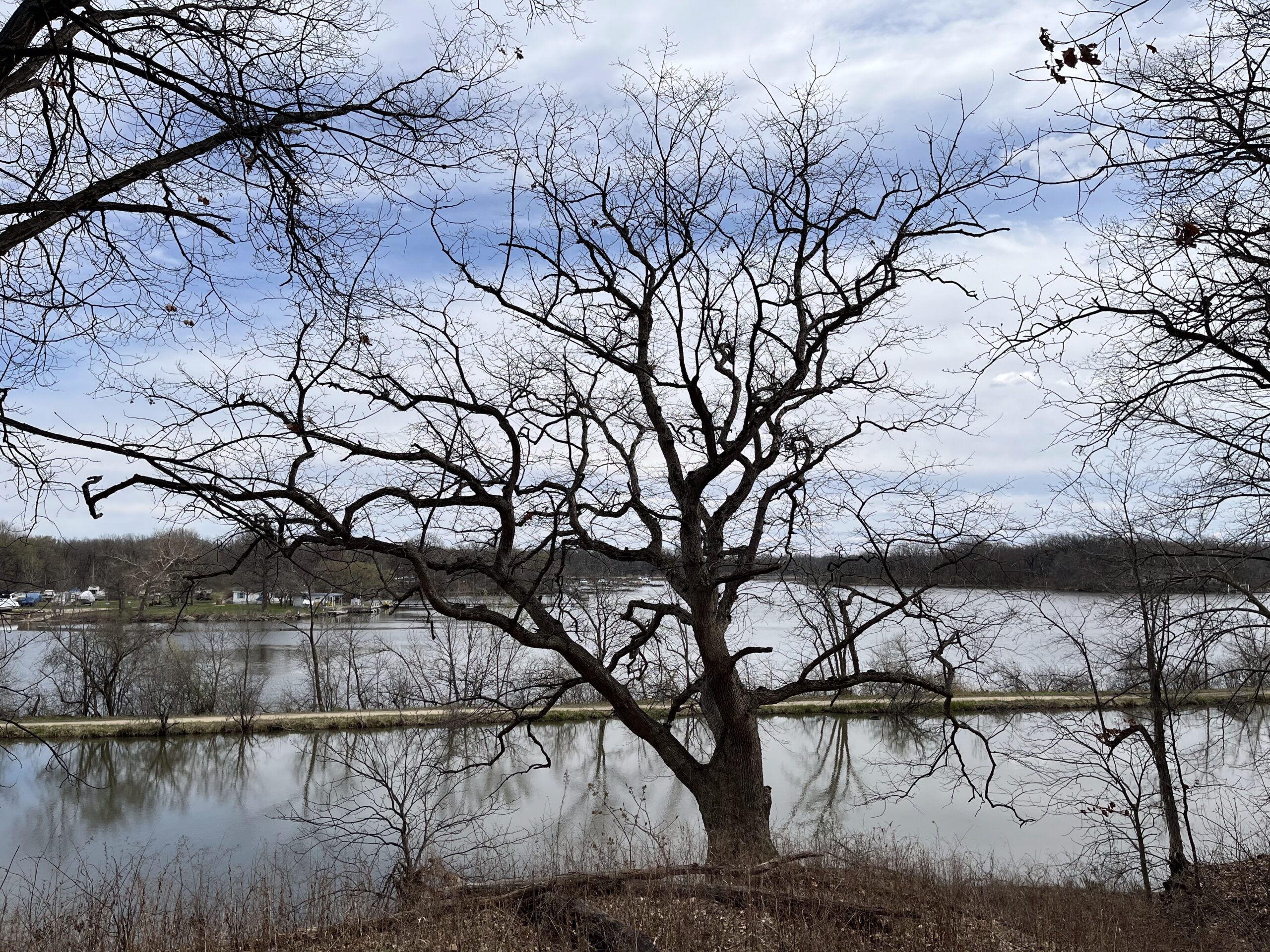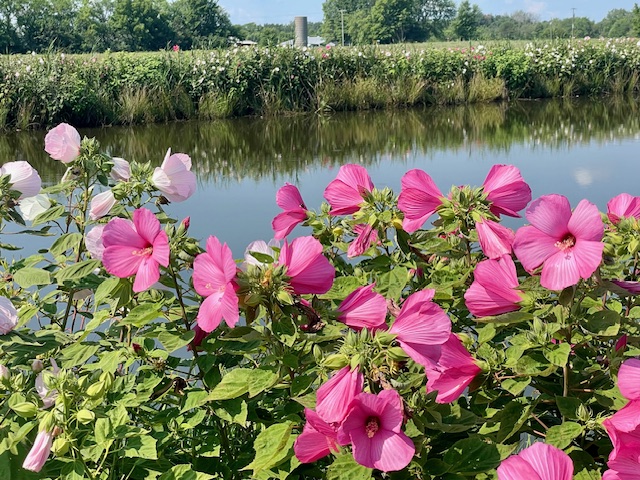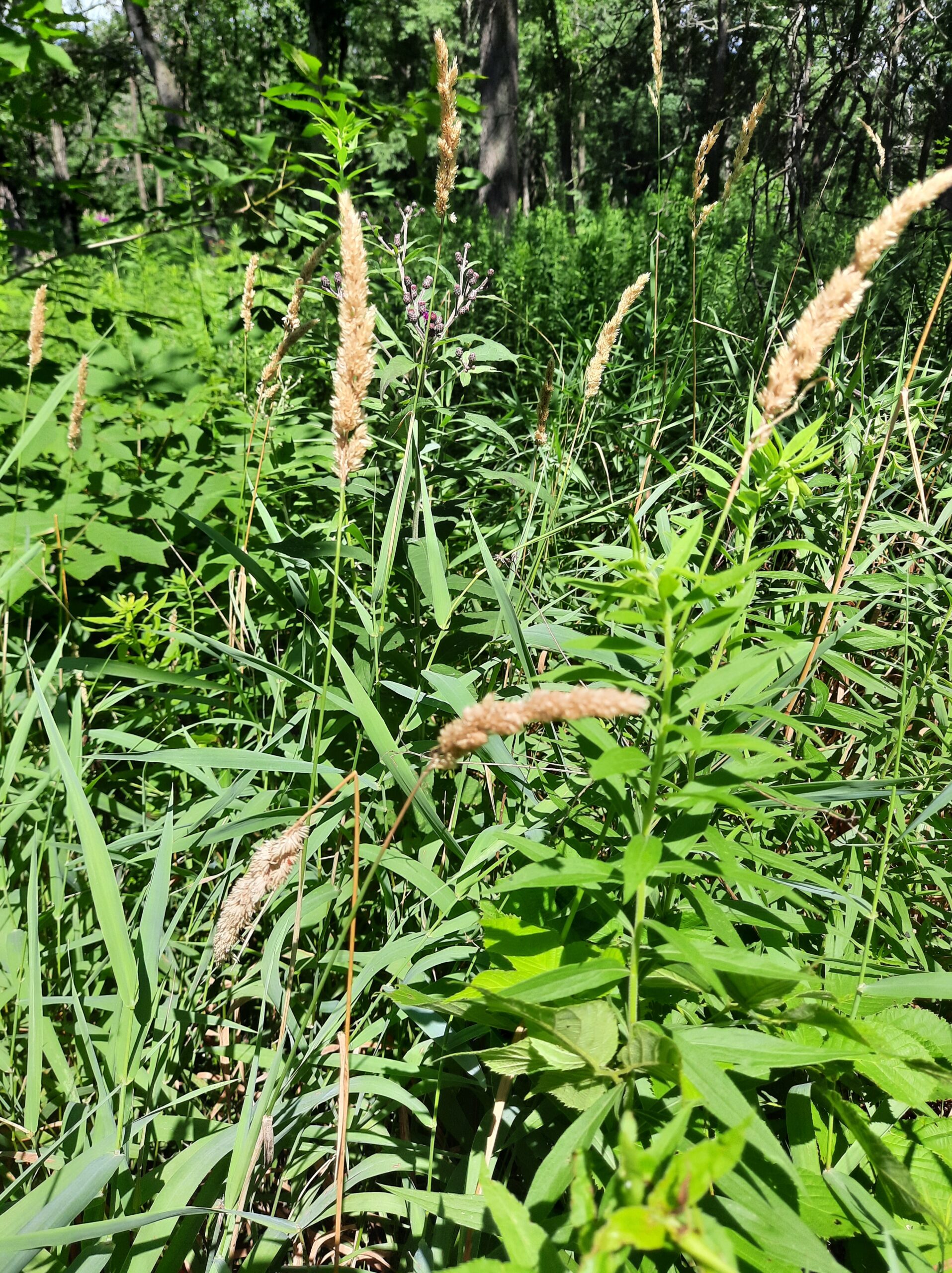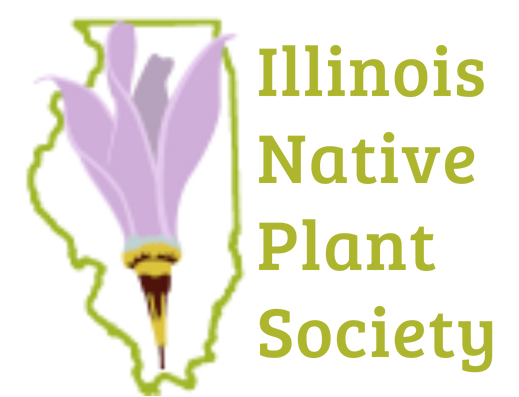What is a native plant and why does it matter? Part 2
So, last time we left off with marine plants creating enough oxygen to create an ozone layer in the atmosphere. This blocked the UV radiation that made life on land impossible. Algae colonized wet areas on land, followed by primitive plants without roots or vascular systems. All land plants descended from these early colonizers, with… Read more
Nature Notes

Wildflowers April 6
McKinley Woods FP On Sunday, April 6, I went to McKinley Woods to see how the wildflowers are looking. No prescribed burn this year so the display is less showy and more uneven than usual as many plants are delayed trying to come up through the leaves, while bare ground and south facing areas are… Read more
Nature Notes

Plant Profile: A Handful of Hibiscus Seed
By Henry Eilers On August 19 at 9 am we met at Glenn and Nancy Savage’s place on Quail Lane to view their amazing and extensive prairie and wetland restorations. Emilee Hale, Pheasants Forever biologist led a group of participants from PF, local soil and water conservation districts and several federal agencies. Also participating were… Read more
Plant Profiles by Henry "Weeds" Eilers

European Reed Canary Grass
Invasive species April 2024 European Reed Canary Grass (Phalaris arundinacea). Reed Canary Grass (RCG) originated in Europe, Asia, and Canada. It is unclear if there was a native strain of RCG in Illinois. The native and European strains of RCG are hard for botanists to tell apart with the naked eye but easy for ecologists to separate. See that… Read more
Nature Notes
Preventing the Spread of Invasive Plants Through Hiking Etiquette
Doing our part as individuals as we enjoy nature takes a little etiquette. Beyond the usual field trip guidelines of bug spray and sturdy shoes, I would like to discuss an often-overlooked aspect of hiking etiquette, cleanliness, and sanitation. Now, I’m not going to talk about using outhouses (please don’t hover over the seat; you’re too… Read more
Nature Notes
The Dixon National Tallgrass Prairie Seed Bank: Conserving Native Plant Diversity
The ability of seed banks to successfully store seeds of economically important crops for long periods of time has been adopted by plant conservationists as a method for conserving dwindling plant diversity across the globe. The premise of seed banking is that if seeds are dried to 15-24% relative humidity and stored at -20°C, many species can be held in a dormant state for decades to… Read more
Nature Notes
Say Goodbye to Your Callery Pear
Remove Your Invasive Callery Pear and Receive a $25 Coupon to Spend at the Illinois Native Plant Society Central Chapter’s Plant Sale Bring a “selfie” with one or more cut-down Callery pear trees and claim one of the 40 coupons we will have available at the annual native plant sale in Springfield. Use the $25… Read more
Nature Notes
Plant Profile: Sedges (have edges…)
It has been said that it is ‘the little things that make the world go round’. The renowned author E. O. Wilson had ants and beetles in mind. But it could also be said for sedges. They are a group of grass like plants, also referred to as graminoids, about which most of us know… Read more
Nature Notes
Patricia K Armstrong
From INPS President Janine Catchpole: I want to talk about Patricia K Armstrong. She is a woman with a history we should appreciate, and she has a problem that needs a creative solution. At 90 trips around the sun, she climbed to the Big Prairie at Revis during the Annual Gathering with ease, and down… Read more
Nature Notes
Recollections of Prairie Discovery
When my parents moved to Northbrook in 1951, the entire area between Crabtree Lane and Dundee Road was prairie and unchanneled west fork of the north branch of the Chicago River (except for a handful of houses on the north side of Crabtree Lane near Western Ave). Many natural prairie areas that had never been… Read more
